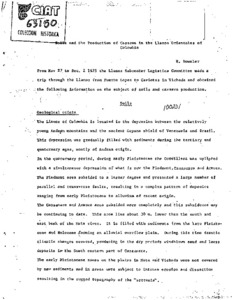Mission
To reduce hunger and poverty, and improve human nutrition in the tropics through research aimed at increasing the eco-efficiency of agriculture.
People
CIAT’s staff includes about 200 scientists. Supported by a wide array of donors, the Center collaborates with hundreds of partners to conduct high-quality research and translate the results into development impact. A Board of Trustees provides oversight of CIAT’s research and financial management.
Values
- Shared organizational ethic
- We respect each other, our partners, and the people who benefit from our work. We act with honesty, integrity, transparency, and environmental responsibility in all of our joint endeavors.
- Learning through partnerships
- We work efficiently and pragmatically together and with partners. Considering our diversity to be a key asset, we adapt readily to change and strive to improve our performance through continuous learning.
- Innovation for impact
- We develop innovative solutions to important challenges in tropical agriculture, resulting in major benefits for the people who support, participate in, and profit from our work.
Members:
Resources
Displaying 856 - 860 of 958The mechanisms of recognition between legume roots and rhizobia: Some implications for biological nitrogen fixation in the tropics
This paper reviews the experimental basis for the lectin-recognition hypothesis and considers ways in which the host/Rhizobium interaction might be manipulated to enhance the benefits of symbiotic nitrogen fixation in the tropics.
Soil microbiology
Se describen los resultados obtenidos durante 1981 por la seccion de Microbiologia del Suelo del Programa de Pastos Tropicales del CIAT, cuyos objetivos especificos son: 1) seleccionar leguminosas forrajeras promisorias que no requieren inoculacion; 2) seleccionar cepas de Rhizobium para leguminosas que si necesitan inoculacion; y 3) evaluar el efecto de las tecnicas de inoculacion y practicas de manejo de pastos en la nodulacion y fijacion de N en el campo. Se presentan los resultados de 1) expt.



